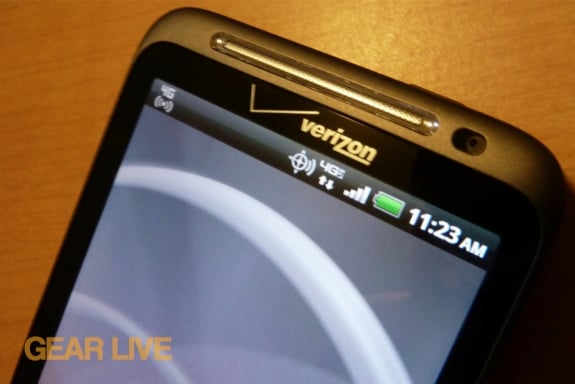Find Our Latest Video Reviews on YouTube!
If you want to stay on top of all of our video reviews of the latest tech, be sure to check out and subscribe to the Gear Live YouTube channel, hosted by Andru Edwards! It’s free!
Tuesday March 22, 2011 1:55 pm
It’s official: I’m addicted to 4G

I'm addicted to 4G, and it could happen to you, too.
By now, almost everyone has seen TV commercials advertising 4G phones. Essentially, a 4G mobile hotspot lets you work anywhere as if you were at home or in the office with a fast broadband connection. With sustained average download speeds in excess of five megabits per second, it's likely you won't be able to tell the difference.
Granted, many felt the same way about the first 3G cellular modems released several years ago. But the Web has become much more advanced since then; all that extra AJAX and HTML5 code takes more bandwidth. People are also streaming more music and video these days. As a result, 3G no longer seems like enough.
In addition, the Apple iPhone 4 and Android smartphones running OS 2.2 (commonly known as Froyo) now offer mobile hotspot capability. That means that for an extra monthly fee, you can use your phone as a 4G hotspot for up to five devices—or even eight, in the case of the HTC Thunderbolt. You no longer need to buy a separate cellular modem, which was really just one more thing to carry around, charge all the time, and worry about losing. Mobile hotspot access averages $20 per month across the major U.S. carriers. That's not chump change, but it's a long way from the $50 to $60 per month a separate USB modem normally costs.
Right now, 4G is entirely a USB modem and Android phone proposition. You can't get it on an iPhone or BlackBerry yet, though the rumor mill is already churning with the prospect of an incoming LTE iPhone in June.
In practice, I get more out of the hotspot capability than anything else. Sure, a 4G phone means you can watch smooth YouTube videos and browse the Web quickly on the phone itself. But the advantages really kick in when using a laptop or tablet. I'll pop open a laptop, boot up Google Chrome, open five or six tabs, sync files with Dropbox, and get to work without so much as a hiccup.
Like any cutting edge technology, 4G isn't perfect. While latency is much better than what you'd get with standard 3G modems, which exceeds 300 milliseconds at times, 4G latency typically ranges from 40 to 70 milliseconds. That means online gaming is still out. Web sites dependent on persistent connections like Meebo also don't always work right.
Some wireless carriers are playing fast and loose with the definition of 4G as well. T-Mobile was the obvious pretender, with its 3-and-a-half-G-ish upgrades to the carrier's existing 3G network. But T-Mobile phones can achieve serious speeds with HSPA+ capability, so I'll give them a pass. In fact, I've done the majority of my 4G mobile hotspot testing with our loaner Samsung Galaxy S 4G. More worrisome is AT&T, whose current 4G phones are testing slower than their existing 3G counterparts; that's just wrong.
There are other hurdles to overcome as well. The most egregious is the wireless carriers' chokehold on download restrictions. 2GB to 5GB monthly limits mean that for all the speed you get with 4G, you can't do anything that really takes advantage of the speed, such as stream movies or download PC software updates, without running the risk of going over the limit and racking up additional charges. In fact, we found that you could burn through an entire month's allotment of 4G coverage in just 32 minutes.
Finally, real-world transfer speeds are highly dependent on the phone, carrier, and location. For example, where I live in northeastern Massachusetts, there's virtually no T-Mobile voice coverage inside my house. I spend most of my time testing T-Mobile phones out in the yard or in town. Yet, just 10 minutes away in Lowell, MA, there's solid T-Mobile 4G HSPA+ coverage, whereas a Sprint EVO Shift 4G barely registers a bar of 3G signal—with no WiMAX to be found. One set of download tests delivered 4,000 to 4,300 Kbps down for a Samsung Galaxy S 4G on T-Mobile in mobile hotspot mode, whereas the EVO Shift 4G could barely muster 300 Kbps in the same spot.
Regardless, it's clear that persistent 4G coverage is the future. You can bet I'll be first in line to buy in—that is, as soon as wireless carriers figure out how to deliver more of it without gouging us with overage fees.
This article, written by Jamie Lendino, originally appeared on PCMag.com and is republished on Gear Live with the permission of Ziff Davis, Inc.











